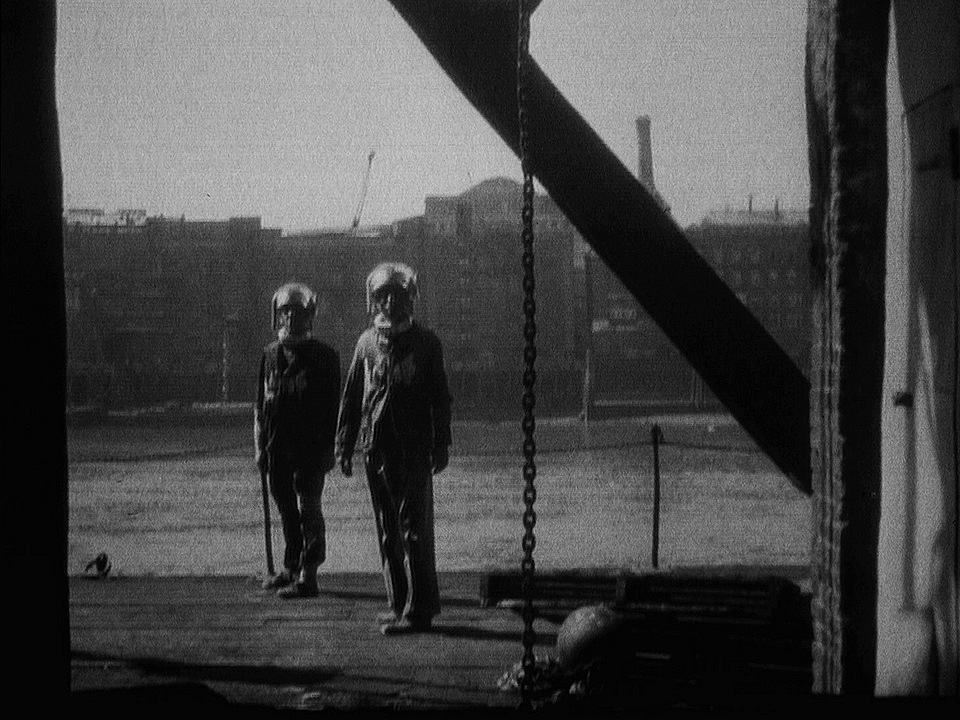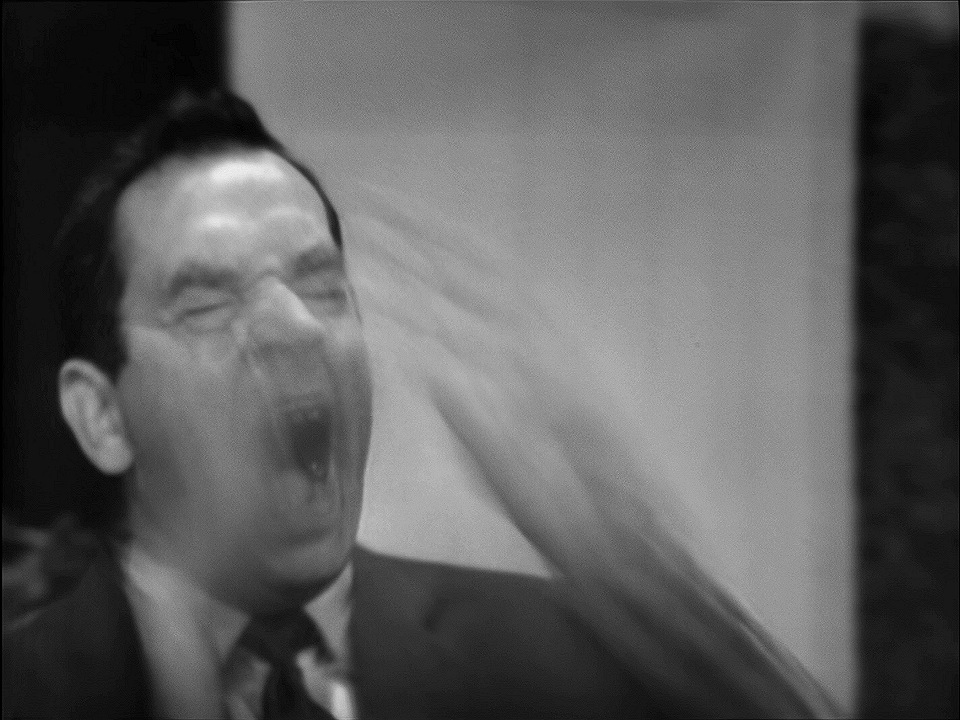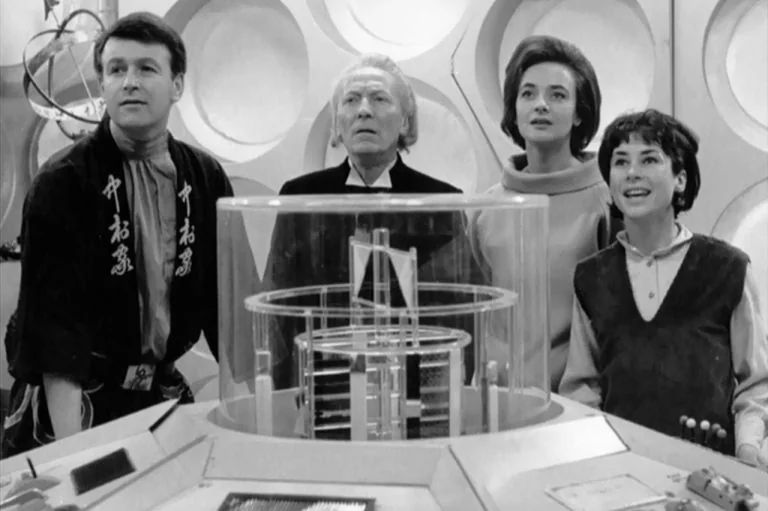
Written by Tom
Ian jams the Daleks’ bomb from being to get anywhere near the Earth’s core. Susan and David knock out the energy generator which allows the Daleks to move around, immobilizing them. The Doctor gets into the Dalek control room and, with Barbara’s help, instructs the Robomen to turn on the Daleks, leading to a full-on revolution. The Daleks’ bomb explodes, though is far away from the Earth’s core to stop it destroying the planet. (It merely uses a volcanic eruption that takes down both a forest and a city, while still remaining safe enough that you can apparently stand just outside the entrance to the Dalek’s mine it was in and survive the blast.) After seeing David and Susan profess their love for each other, the Doctor decides to leave Susan on Earth, figuring that this is a better place for her to grow up than he could provide.
While the serial in general has been a bit wobbly at getting the whole “action sequence” concept to work, the dispatching of the Daleks in this serial was actually pretty satisfying to watch. The plot might be surprisingly reliant on items introduced this episode to work (such as the incredibly convenient Roboman Control Unit that everyone just so ends up being near) but it’s still satisfying to see the two things added to the Daleks during this serial (their static electricity dishes and the Robomen) be turned against them at the end. There’s also something very funny about the Doctor and Barbara putting on Dalek voices while commanding the Robomen, despite there being no indication that that’s actually needed. It’s one final leaning into the fact that the show sees the Daleks as these slightly ridiculous creatures which run mostly on iconography, setting their final end into motion by essentially parodying them.
Alas we then get to Susan leaving the show, and it’s worse than we thought it was going to be. Ever since the Sensorite serial, the show has been pretty staunch that Susan’s relationship with the Doctor has been a problematically paternalistic one that’s stopping her from reaching her full potential as a person. As such, having her go off to marry someone is actually quite a clever ending for her, showing her moving on from the Doctor’s paternal gaze and taking on an adult role within a family of her own, rising into a full female equivalent of him. The issue with this though, as we’ve discussed before, is that she has to be the one to make the decision to get married herself, otherwise her leaving doesn’t become her growing into someone more in control of herself as much it becomes her exchanging one male she’s subservient to for another. She has to be the person to propose.
(more…)







